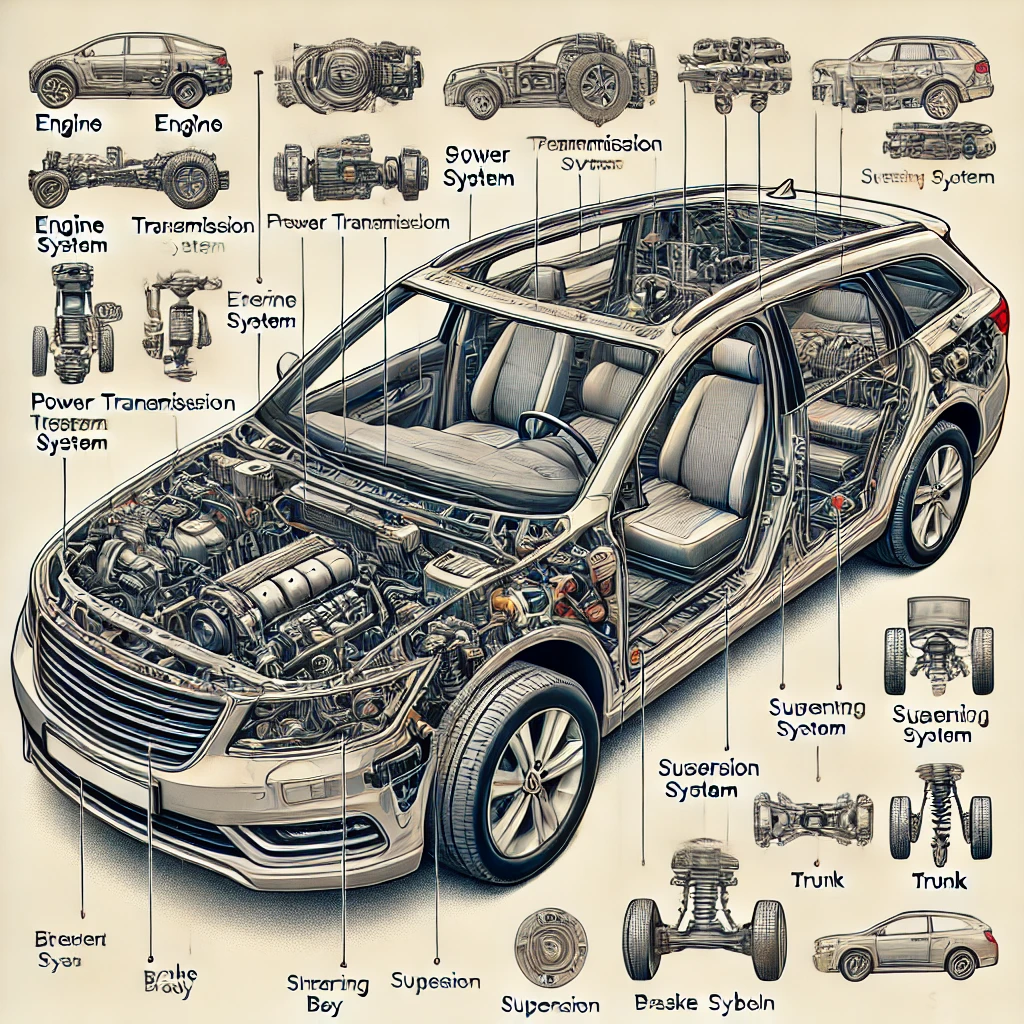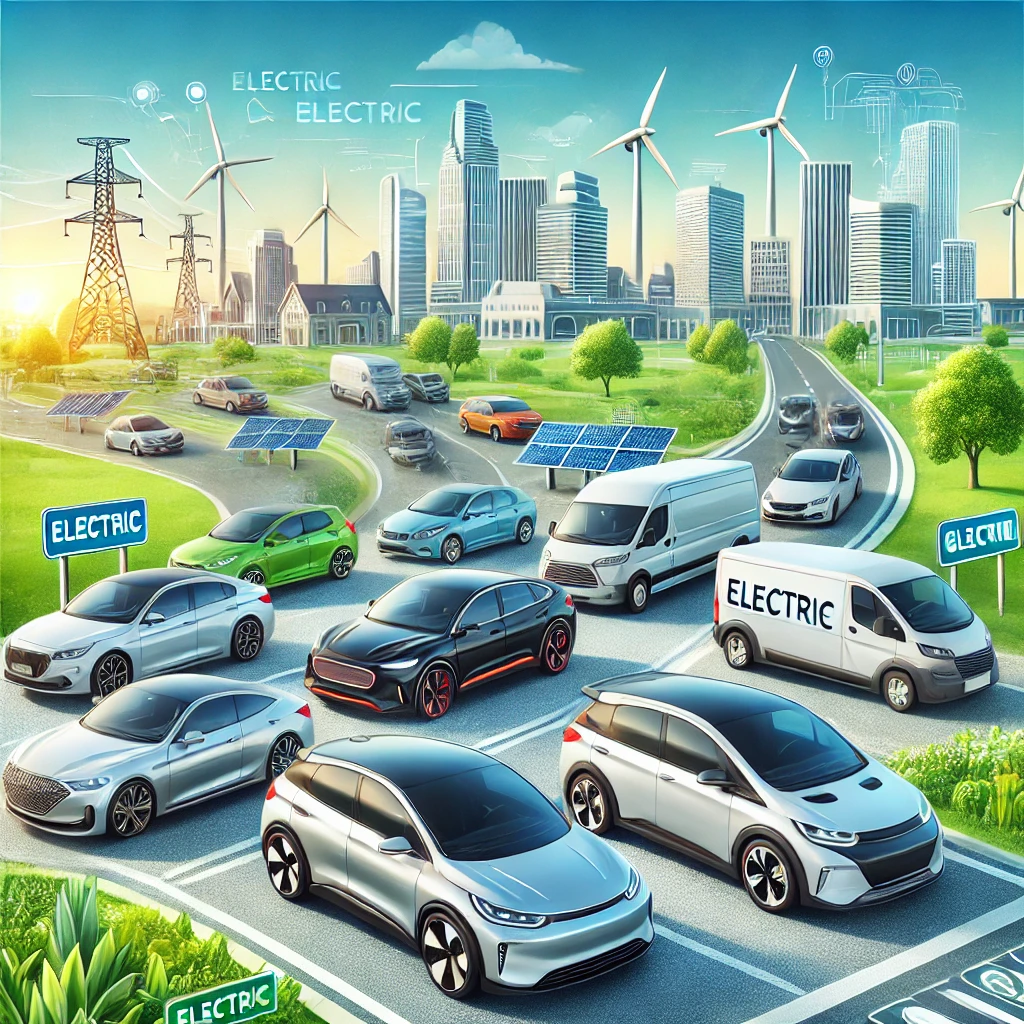Cars have become a necessity for modern life, but they are also causing environmental pollution. Eco-friendly cars such as hybrid, electric, and hydrogen vehicles are being developed, but they are not yet commercialized. We need to start a new chapter in the automobile era by increasing efficiency.
In the 21st century, cars are considered an indispensable means of transportation. In 2022, a survey by the Organization of International Automobile Manufacturers (OICA) confirmed that there are approximately 1.3 billion cars in use around the world. That’s about one-fifth of the world’s population. As the world rapidly industrializes and the exchange of information becomes more important, cars have become an indispensable part of modern life. But even though we see them every day, use them, and hear about them here and there, we realize that we don’t actually know much about them. So let’s learn more about one of the greatest inventions ever made by man.
The definition of an automobile is a vehicle that transports people or goods by transmitting power from its own engine to its wheels. Humans have an instinctive need to move from place to place. This is because the things we need are usually far away, not close by, and in order to get them, we have to go or they have to come to us. We started with basic means like carts and horses, and progressed to steam locomotives and automobiles, which are inventions that fulfill this need brilliantly by dramatically reducing the amount of human effort required.
Humans have long been devising ways to get from one place to another without exerting themselves, using natural or animal forces. Vehicles such as boats, carriages, and horses are the most primitive means of transportation in this sense. However, times changed, and by the 18th century, steam-powered locomotives, steamships, and other types of transportation began to be created, and the use of animals began to diminish. The first automobile, the steam car, was invented by Nicolas Joseph Quineau in 1769, but it was not widely used because it had many problems, such as failure to maintain pressure resistance and a heavy engine. In the 19th century, François Isaac de Rivas created a car with an internal combustion engine that ran on hydrogen and oxygen in 1807, but it was not a commercial success.
Aside from these first primitive cars, it was Siegfried Markus who created the first modern car using fossil fuels. In 1864, he invented the gasoline engine and installed an internal combustion engine in his car, which later became the model for all cars. Over the next 20 years, he continued to add clutches, brakes, steering wheels, better engine models, and more to his models, and was considered the father of the automobile for as long as he lived. In reality, Karl Benz, who created the gasoline engine in 1886, is now considered the father of the automobile because Siegfried Marcus was of Jewish descent, and the Nazis destroyed all his records when they came to power.
Aside from the invention of the automobile, the most groundbreaking event in automotive history was the mass production assembly line system introduced by Henry Ford in 1913. It revolutionized the way cars were produced, reducing production time from 12.5 hours to 1.5 hours. As a result, factory accidents dramatically decreased, and workers’ salaries increased, contributing to a better quality of life. The price of cars also decreased, to the point where a factory worker could buy a 1908 Model T for two months’ salary. This played a big role in helping the automobile spread faster in the United States than in European countries that didn’t adopt the system. Nowadays, almost all companies are using robots to produce various types of cars based on Ford’s system.

Let’s take a look at the structure of a car. A car consists of two main parts, the body and the chassis, which are connected to each other. The body is composed of the engine compartment, passenger compartment, and trunk, and is divided into a frame type that separates the body and frame, and a unibody type that is a single structure. The chassis contains the engine, powertrain, steering, suspension, and brakes. The power transmission system is a device that transmits power generated by the engine to the wheels using clutches, transmissions, axles, etc. The steering system is responsible for the direction of travel of the car and consists of a steering mechanism, gear mechanism, and linkage mechanism. The suspension, also known as the suspension, is a device that directly affects the ride quality of the car. Nowadays, new cars are being created that don”t use the traditional internal combustion engine, such as hybrid, hydrogen, and electric vehicles, which means that the structure of the car, especially the interior, varies greatly. Nevertheless, the above are common features that most cars have, regardless of the type of car they are.
Nowadays, there are many more types of cars than ever before. As a result, the criteria for categorizing cars has become blurred, but we can broadly categorize them according to the type of power source, the purpose of the car, and the size. First, there are gasoline, diesel, flex-fuel, electric, and hydrogen cars, which have been produced in response to the growing demand for eco-friendly cars in the modern era. There are also small, medium, and large cars, and there are different types of cars for different purposes, such as passenger cars, vans, cargo cars, and specialty cars.
The convenience of owning a car and being able to go where you want, when you want is something that modern people really need. However, there are many personal costs associated with owning a car, such as the price, repairs, fuel, insurance, taxes, and parking, as well as social costs, such as road repairs, land use, traffic congestion, and scrapping. One of the most serious problems is the environmental aspect. Although many new vehicles with relatively low environmental impact, such as hydrogen cell, electric, and hybrid vehicles, have been created in recent years, they have not reached the stage of commercialization, and most cars still use gasoline or diesel fuel. Gasoline and diesel, which emit about 8.8 kilograms and 10 kilograms of CO2 per gallon, respectively, have been in continuous use since the early 19th century and are still in use today, and the exhaust from their use has accumulated and is now causing major environmental problems such as global warming. As a result, governments have tried to encourage consumers to use more efficient cars through road taxes, fuel taxes, etc.
As technology advances in the 21st century, new types of cars are being developed that have a lower impact on the environment, such as hybrids, electric batteries, and hydrogen vehicles. The flip side of this is the introduction of self-driving cars to reduce the number of cars on the road, such as by introducing a large number of taxis that are always on the road and encouraging people to use them instead of their own cars, thereby reducing the absolute number of private cars and thus reducing pollution. These cars are still in the experimental stage and have not yet been commercialized, but if they become more efficient, they could usher in a new era of automobiles.

The automobile, which has had a huge impact on our history and played a huge role in the development of society, has become one of the necessities of modern life. Automobiles, which play an important role in transporting people and goods, will be further developed in the future and will make human life more convenient. The aspect that emits a lot of emissions and causes serious environmental problems is definitely something that needs to be addressed and should be looked into before further development. The future of the automobile is bright, as long as we can solve problems such as the growing number of vehicles and the increasing number of safety accidents.
 I’m a blog writer. I want to write articles that touch people’s hearts. I love Coca-Cola, coffee, reading and traveling. I hope you find happiness through my writing.
I’m a blog writer. I want to write articles that touch people’s hearts. I love Coca-Cola, coffee, reading and traveling. I hope you find happiness through my writing.